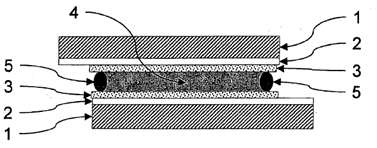Method of producing a liquid crystal material
Référence
86740-01
Statut des brevets
French patent application FR0509157 filed on September 8th,2005



Inventeurs
Michel MITOV
Nathalie DESSAUD
Statut commercial
Exclusive or non-exclusive licence Collaborative research
Laboratoire
CEMES – Centre d’Elaboration des Matériaux et d’Etudes Structurales – UPR 8011. Toulouse, France, http://www.cemes.fr/
Description
CONTEXT
Today, liquid crystal based materials are increasingly used because of their optical properties which enable them to control visible and invisible (infrared IR and ultraviolet UV) light. In particular, cholesteric liquid crystal based materials have been developed, because they have optical properties that differ from those of nematic liquid crystals due to their helical structure. Even though, for certain applications, reflective selectivity is required in cholesteric liquid crystals, many applications exist for which such selectivity is a disadvantage.
TECHNICAL DESCRIPTION
The invention relates to a method of producing a liquid crystal material. The inventive method is characterised in that it comprises the following steps consisting in: applying a first treatment to a liquid crystal mixture having a helical structure comprising a first non-photoreactive liquid crystal (A) and a second photoreactive liquid crystal (B), said first treatment modifying a handedness of the helix of the mixture; and applying a second treatment to the mixture such that the second liquid crystal (B) forms a polymer network, said second treatment being performed during all or part of the first treatment such that the liquid crystal material retains a memory of the modifications to the helix and the entire volume of the material has both a right-handed and left-handed helical structure. The invention also relates to a liquid crystal device comprising a liquid crystal material consisting of at least one liquid crystal having a helical structure, which is characterised in that the entire volume of the material has both a right-handed and left-handed helical structure, such that the device has a reflection rate of more than 50% of non polarised light. The reflexion band is larger (some hundreds of nm).

Fig. 1 – Representation of a cell containing the liquid crystal material
BENEFITS
The key advantages of this invention are:
– possibility of using selective reflection to control the light
– possibility to manage separately the light (visible) and the heat (infrared radiation)
– possibility to cancel the performances of the material reflection by application of an electrical voltage
INDUSTRIAL APPLICATIONS
The application of this invention concerns the intelligent glazing (smart windows) that would make to realize economies in heating and air conditioning. The broad band reflective liquid crystals may also have applications in the field of LCD screens.
For further information, please contact us (Ref 86740-01)
Besoin de plus d'informations ?
Nous contacterTechnologies Liées
-
16.04.2014
Multi-color luminescent screens for label-free bio-imaging
Dispositifs & Instruments, Matériaux – Revêtements 04585-01
-
04.02.2014
Transparent glass and ceramic glass in a large wavelength bandwidth (from visible to infrared 6µm)
Matériaux – Revêtements 05728-01
-
04.10.2013
Self healing vitreous composition, their preparation and uses
Matériaux – Revêtements 02782-01